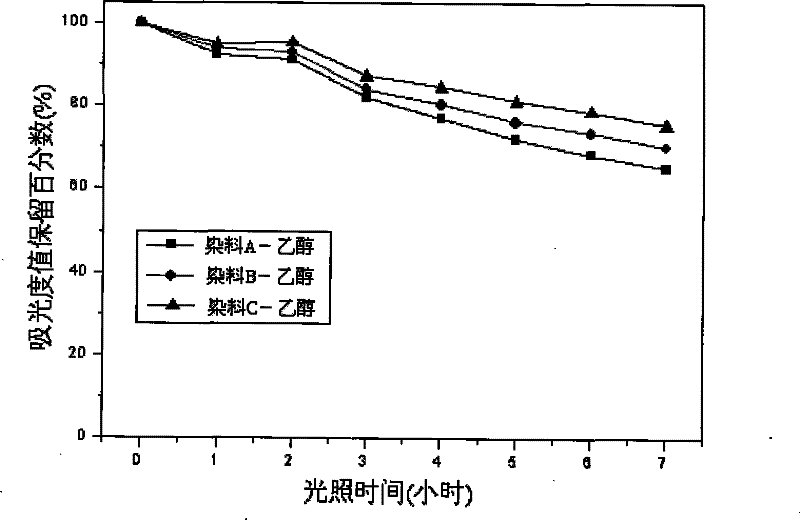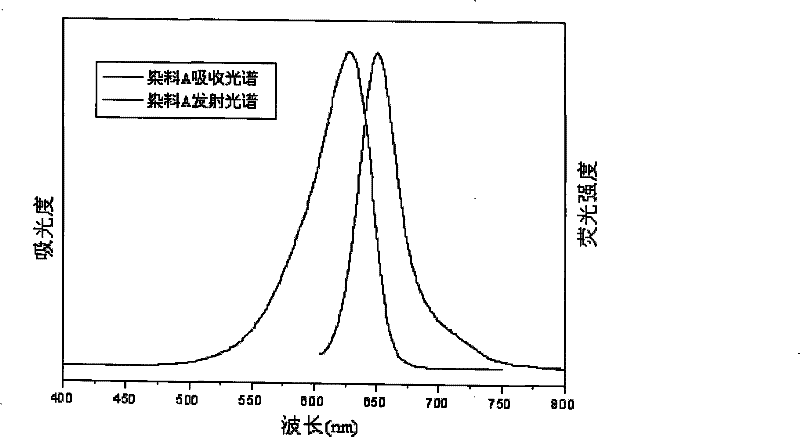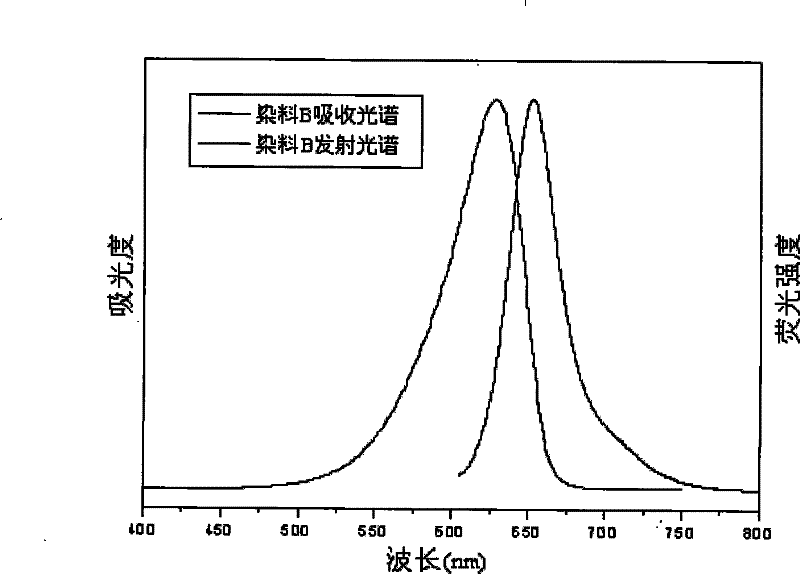Halogen-containing asymmetry phthalocyanines compound, preparation method and application thereof
A cyanine compound, halogen-containing technology, applied in asymmetric cyanine compound, fluorescent dye application, new compound field, can solve the problems of unsatisfactory detection sensitivity, low fluorescence detection efficiency, poor cell permeability, etc. Avoid fluorescence background interference, simple structure, good photostability
- Summary
- Abstract
- Description
- Claims
- Application Information
AI Technical Summary
Problems solved by technology
Method used
Image
Examples
Embodiment 1
[0065] Synthesis of new compound intermediate 1-ethyl-4-methylquinoline quaternary ammonium salt:
[0066] Add 20mmol of 4-methylquinoline and 40mmol of ethyl iodide into a 100ml round bottom flask containing 20ml of toluene under argon protection. The reaction was heated and refluxed for 24 hours and then stopped. The heating was based on the fact that the reaction system began to reflux, and the temperature was about 110 degrees. After the mixture was cooled, the precipitate was filtered and the filter cake was washed with ether. After drying, a light yellow solid powder was obtained with a crude yield of 85%.
Embodiment 2
[0068] Preparation of Compound A:
[0069]
[0070] 10mmol of 1-ethyl-4-methylquinoline quaternary ammonium salt and 30mmol of N, N'-diphenylformamidine in 50ml of acetic anhydride were heated and stirred on a C oil bath at 100°C for 1.5 hours. The yellow-brown oil obtained by the reaction was poured into diethyl ether to precipitate a yellow solid powder, which was filtered and dried. The crude product was separated through a silica gel column, and the yellow component was collected with the eluent dichloromethane:methanol=100:3, with a yield of 41%. 4 mmol of 1-fluoroethyl-2-methylbenzothiazole quaternary ammonium salt and 1 ml of triethylamine were added thereto, and stirred under reflux in 25 ml of ethylene glycol monomethyl ether for 1.5 hours. Wherein, 1-fluoroethyl-2-methylbenzothiazole quaternary ammonium salt can be prepared by a general synthesis method similar to the quaternary ammonium salt in Example 1. Then add 4mmol NaClO to the reaction solution 4 Dissolv...
Embodiment 3
[0072] Preparation of Compound B:
[0073]
[0074] 10mmol of 1-ethyl-4-methylquinoline quaternary ammonium salt and 30mmol of N,N'-diphenylformamidine in 50ml of acetic anhydride were heated and stirred on an oil bath at 100°C for 1.5 hours. The yellow-brown oil obtained by the reaction was poured into diethyl ether to precipitate a yellow solid powder, which was filtered and dried. The crude product was separated through a silica gel column, and the yellow component was collected with the eluent dichloromethane:methanol=100:3, with a yield of 41%. 4 mmol of 1-chloroethyl-2-methylbenzothiazole quaternary ammonium salt and 1 ml of triethylamine were added thereto, and stirred in 25 ml of ethylene glycol monomethyl ether at room temperature for 12 hours. Wherein, 1-chloroethyl-2-methylbenzothiazole quaternary ammonium salt can be prepared by the general synthesis method of quaternary ammonium salt similar to Example 1. The reaction solution was poured into diethyl ether, a...
PUM
 Login to View More
Login to View More Abstract
Description
Claims
Application Information
 Login to View More
Login to View More - R&D
- Intellectual Property
- Life Sciences
- Materials
- Tech Scout
- Unparalleled Data Quality
- Higher Quality Content
- 60% Fewer Hallucinations
Browse by: Latest US Patents, China's latest patents, Technical Efficacy Thesaurus, Application Domain, Technology Topic, Popular Technical Reports.
© 2025 PatSnap. All rights reserved.Legal|Privacy policy|Modern Slavery Act Transparency Statement|Sitemap|About US| Contact US: help@patsnap.com



